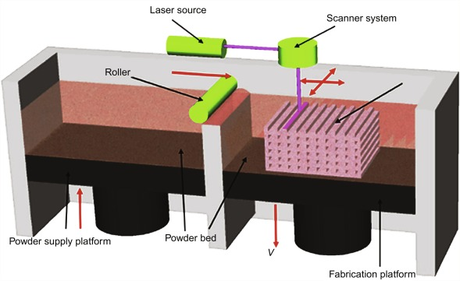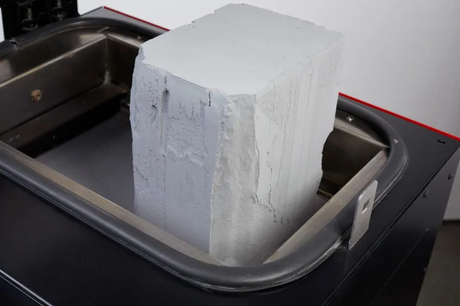Selective Laser Sintering (SLS) is one of the most popular methods used to produce three-dimensional objects quickly and efficiently.
If you are a 3D modeler or user of a 3D printer, you likely already know how valuable this technology can be. With the right setup, SLS has nearly limitless potential to create just about anything – from everyday trinkets to industrial-grade parts and components.
In this blog post, we’ll discuss exactly what SLS technology is and why it’s a such powerful tool for three-dimensional prototyping and production. Keep reading for all the information you need on selective laser sintering!
1. What is selective laser sintering?
2. How does selective laser sintering work?
3. What are the benefits of selective laser sintering?
4. What are the limitations of selective laser sintering?
5. How can selective laser sintering be used in manufacturing?
What is Selective Laser Sintering?

Selective Laser Sintering (SLS) is a 3D printing technology that uses a laser to selectively fuse together powdered materials, such as nylon and polycarbonate, to create a 3D object.
The laser selectively melts the powder in specific areas as dictated by a 3D model created in a CAD software. The powder is spread in successive layers and fused together to produce the desired shape.
SLS is an excellent option for 3D printing because it creates highly detailed, complex objects that are capable of withstanding high levels of stress and strain.
It is also a relatively cost-effective option, with parts produced quickly and without the need for expensive post-processing. This makes it an attractive choice for prototyping, small-batch production, and end-use applications.
Plus, it offers a range of materials to choose from for your project.
How Does Selective Laser Sintering Work?
Selective laser sintering (SLS) is a 3D printing technology that uses a laser to fuse small particles of plastic, metal, ceramic, or glass powder into a solid object.
The laser selectively sinters the powder according to the cross-section of the desired object, building it up layer by layer. SLS is often used for rapid prototyping and for producing one-off or small production runs of specialized parts.
SLS works by first laying down a thin layer of powder. A computer-generated cross-section of the desired object is then projected onto the powder, and a high-power laser is used to fuse the powder according to the cross-section.
This process is repeated until the object is complete. The object is then removed from the powder bed and cleaned up.
Because SLS builds objects layer by layer, it can produce objects with fine details and smooth surfaces. It can also produce objects with moving parts since each part can be printed separately and then assembled later.
SLS is also relatively fast and can produce objects in minutes or hours depending on size and complexity.
What are the Benefits of Selective Laser Sintering?

Selective laser sintering (SLS) is a 3D printing technology that uses a laser to fuse small particles of plastic, metal, ceramic, or glass together to create a three-dimensional object.
Unlike other 3D printing technologies, SLS does not require a support structure to be printed around the object, which makes it ideal for printing complex shapes.
SLS has a number of benefits over other 3D printing technologies.
- First, it can print objects with very high accuracy and resolution. This makes it ideal for printing small parts with intricate details.
- Second, SLS can print a wide range of materials, including plastics, metals, and ceramics. This makes it possible to create objects with a wide range of properties, such as strength, stiffness, and thermal resistance.
- Third, SLS is relatively fast and efficient and can produce parts with relatively low costs. Finally, SLS produces little waste material, making it an environmentally friendly option.
What are the limitations of selective laser sintering?
Selective laser sintering is a technology that can be used to create three-dimensional objects from a digital model. The technology uses a laser to fuse small particles of plastic, metal, or ceramic material into a solid object. The technology has several limitations.
- The first limitation is that the technology can only be used to create objects from a limited range of materials. The most common materials used in selective laser sintering are plastic, metal, and ceramic. However, the technology cannot be used to create objects from other materials, such as fabric or wood.
- The second limitation is that the technology has a limited range of shapes that can be created. The most common shapes are cylinders, cubes, and spheres. However, the technology cannot be used to create more complex shapes, such as stars or animals.
- The third limitation is that the technology has a limited range of sizes that can be created. The most common sizes are small (less than 10 cm) and medium (between 10 cm and 30 cm). However, the technology cannot be used to create large objects (more than 30 cm).
How can selective laser sintering be used in manufacturing?
Selective laser sintering (SLS) is a 3D printing technology that uses a laser to fuse small particles of plastic, metal, ceramic, or glass together.
This technology can be used in manufacturing to create prototypes and end-use parts. SLS is particularly well-suited for producing complex shapes with tight tolerances.
In addition, SLS parts can be finished post-printing with a variety of coatings and treatments, such as paint and powder coating.
Selective Laser Sintering (SLS) Materials
Selective Laser Sintering (SLS) is a process used to create 3D objects using materials like plastics, metals, and composites. This method works by using a high-power laser to fuse small particles of material together into a solid object.
Because of its versatility and ability to work with a wide range of materials, SLS is widely considered one of the most advanced 3D printing technologies available today.
Whether you are looking to prototype new designs or manufacture final products, SLS offers excellent precision and accuracy that can help bring your ideas to life.
At its core, SLS relies on two key steps to create 3D-printed objects. First, a high-power laser is used to fuse small particles of material together into a solid object.
This process takes advantage of the powder bed method, in which a thin layer of material is evenly spread across the build platform and then “sintered” with a laser beam. As each layer is completed, the printing head moves down by a small distance, and another layer of powder is added before repeating the process.
Once finished, your object will be removed from the printer and any excess powder will be vacuumed away for clean finishing.
While SLS can be used with many different materials depending on your needs, it is particularly well suited to work with plastics, metals, and composites.
These materials offer a range of benefits including exceptional strength, flexibility, and precision. Additionally, SLS offers many different finishing options that allow you to further customize your final product.
Whether you are prototyping a new design or manufacturing end products for your customers, SLS can help bring your ideas to life with incredible accuracy and precision. So if you’re looking for the ultimate 3D printing technology for your business or project, look no further than Selective Laser Sintering today!
Conclusion
Selective laser sintering is a type of additive manufacturing that can be used to create parts and products from a variety of materials.
The selective laser sintering process works by using a high-powered laser to fuse together small particles of powder into the desired shape.
Selective laser sintering has many benefits, including the ability to create complex shapes, the use of multiple materials, and a low cost of operation.
However, there are also some limitations to consider, such as the need for support and the limited resolution of the final product.
Despite these limitations, selective laser sintering is an important tool in modern manufacturing and will continue to play a role in cutting-edge production processes.
